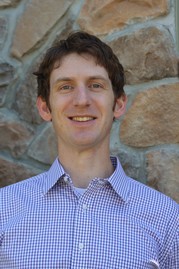|
February 6, 2019 . Vol. 11
From the Bureau of Leading, Teaching, Learning Services

Recently released modules
ELA and Mathematics professional learning aligned to Building Blocks
New learning modules that tailor national resources to meet the needs of Iowa elementary and secondary mathematics and English/language arts teachers have recently been released by the Department of Education.
The modules direct teachers and professional development leaders to high quality tools that align to the mathematics and English/language arts standards and the building blocks of niversal instruction.
The designers of the modules had three goals in mind. April Pforts, mathematics consultants, explained, “We wanted to make sure we identified the best available resources that are aligned to Iowa’s standards and then packaged them in a way that made sense to Iowa teachers.”
The free professional learning modules are available now through the AEA Learning Online System. Search for the modules using these directions: English Language Arts/Literacy or Mathematics.
Three modules in mathematics and three in English/language arts feature the tools and materials developed by nonprofit organizations supporting the implementing of the standards including Student Achievement Partners, Illustrative Mathematics, Unbound Ed, the National Council of Teachers of Mathematics, and EdReports.
The topics covered are similar in both sets of modules:
- Module 1 - Standards and Enacted Curriculum
- Module 2 - Instructional Practices
- Module 3 - Instructional Materials
The modules have been designed to be used in different ways, according to Destiny Eldridge, literacy consultant. They can be accessed by an individual teacher for self-paced learning, by an individual wishing to take them as a course and earn one license renewal credit, or by a teacher leader or professional development coordinator to use to create their school’s or district’s professional learning within learning communities, she said.
“We recommend these modules for anyone who is responsible for implementing the standards,” Eldridge said. “They also support the work of the Universal Tier Tools,” she said, which was designed to support district in using a collaborative inquiry approach to the implementation of Multi-Tiered System of Support.
For more information, contact April Pforts at April.pforts@iowa.gov or (515) 314-6243.
|

Computer Science is Elementary
Six elementary schools will be awarded grants to transform
Computer Science is Elementary is a project to launch six innovative computer science elementary schools. The project was developed by a committee from the Governor’s Science, Technology, Engineering and Mathematics (STEM) Advisory Council and the Department of Education, The six high-poverty schools will be competitively selected to transform existing buildings with engaging computer science instruction.
Schools selected must have at least 40 percent free and reduced lunch and will include both rural and urban sites. Each school will receive a $50,000 grant to support the transformation. The intent is to pick a school from each of the six STEM regions throughout the state.
The program is modeled after an elementary school in the Sioux City CSD, Loess Hills Elementary School, that became a computer science magnet school to boost enrollment and engage students in learning.
One of the expectations of these schools is that they become a resource for other schools, according to Wren Hoffman, computer science consultant. “The hope is that this is one more piece in helping computer science moving forward in grades K through 5. There’s a lot of fear about how am I going to add this to my already busy day. This will be a resource showing how it can be done.”
The STEM Advisory Council has scheduled two webinars, each with the same content, to answer questions potential applicants might have about Computer Science is Elementary. They are Monday, February 18, at 3:30 p.m. and Tuesday, February 26, at 8:00 a.m.
For more information, contact Wren Hoffman at wren.hoffman@iowa.gov or (515) 981-3306.
|

Iowa Teacher of the Year
Burke shows student-centered approach to mathematics
The 2019 Iowa Teacher of the Year Christopher Burke answers questions posed by mathematics consultant April Pforts about how he approaches the implementation of the mathematics standards in his teaching. Burke is an 8th grade teacher at Eleanor Roosevelt Middle School in Dubuque. He also is a teacher leader and serves as the content lead in mathematics for his school. Through this role he also assists in the design of professional learning for middle school mathematics teachers in the district.
April: Describe what you do to increase access and equity of high-level mathematics learning and standards in your classroom?
Chris: Equity has been a big push in our district; our superintendent has made a point of ensuring that every school has a goal based around equity. We have been about to address these goals through ongoing professional learning. One approach I try to adopt is to make no assumptions about the students who comes through my classroom. I always start the year with a survey asking students about their preferred learning style, background, confidence level, interests, who they are as an individual, and how they respond when faced with a challenge. As I become more familiar with ech student and their needs I am able to then blend in formative assessment practices which ensures that I keep student support appropriate. Each problem that is presented in class is meant to contain multiple access points so that each student, regardless of background, is able to relate to the problem. Low floor, high ceiling structured tasks help to meet the needs of all learners. I consistently aim to ask myself, given my students' backgrounds and needs, does a given task invite them in or push them away?
April: What resources do you recommend for teachers who want to strengthen their standards implementation and why?
Chris: I’d say make it a collaborative effort. If I approach this individually, I am only able to view this process through one lens. If I unpack the standards with my peers, I am able to sharpen my view. In Dubuque we benefit through the Teacher Leadership and Compensation system. I serve as a content leader for my building, and with a content leader at each of the three middle schools we are able to work together as we build a repository of resources. In our district we are afforded 85 minutes of school-based professional leaning every Friday morning (students arrive one hour later than normal). This opportunity to collaborate is beyond value as teams of teachers are able to unpack their standards and gain a better understanding of their next steps. Through a comprehensive analysis of learning progressions, using grade level curriculum maps, for instance, we are able to more effectively and efficiently place our time and energy. Thanks goes out to our district leadership for allowing us the opportunity to collaborate on a consistent basis as we aim to push deeper and move beyond our own, singular lens.
April: Describe how the Eight Effective Teaching Practices from Principles to Action are reflected in your instruction.
Chris: That book is right here on my shelf. It’s one of a few keepers that I keep handy. A couple of years ago we did an all-day virtual meeting with Steve Leinwand (hosted by the Department), one of the book’s authors. It was a great day and we made the most of it. Every year the Eight Practices are posted on my wall as a reminder of what best practice looks like. Some practices speak loudly to me. For example, goal setting – how do we invest our students in this process? In my classroom we take time to identify our learning targets and once a week or so to help connect students to their level of mastery throughout a unit. We link the learning targets to the standards so every student can track their progress. Does every student buy into this? No, not necessarily. However, when you hear a student say, “Mr. Burke, I’m not quite clear on Target #5. Can I come in?” you know you've connected a student to their learning. Instead of mindset that is ‘I want to get all As’ or ‘I want to get a B,’ we’re changing it to 'I want to master this skill/concept,' ‘I want to be a student who thinks abstractly’ or even smaller things, like ‘I want to be a leader in my group,’ ‘I want to be more confident,’ ‘I want to volunteer more.’ Here is where goal setting can have a greater impact.
For more information on Chris Burke, contact Isbelia Arzola at isbelia.arzola@iowa.gov or (515) 326-5962. For more information on mathematics standards, contact April Pforts at April.pforts@iowa.gov or (515) 314-6243.
|

Statewide assessment
Standard setting process important in interpreting test results
Last legislative session, HF2235 designated Iowa Testing Programs (ITP) to develop the next statewide assessment. This is the second in a three-part series of stories featuring Iowa Testing Programs on the Iowa Statewide Assessment of Student Progress (ISASP).
After the first form of the ISASP is scored early this summer, ITP will begin the critical process of setting performance standards.
According to Catherine Welch, director of ITP, performance standards specify the level of performance on a test that is required for a test taker to be classified into a given performance category, such as proficient. The classification of test takers into performance categories is operationalized by establishing and applying a cutscore on a test. “The standards setting results are used to help interpret the individual test takers and well as schools, districts, and the state,” she said.
A standard setting panel will consist of participants recommended from the Department of Education, school districts, and various stakeholders. The cutscores established by this team in Summer 2019 will remain in place for future years of ISASP testing, Welch said.
The method used by the standard setting panel will address scores from both selected-response items and constructed-response items, she said. The process will be defined based on input and guidance from the Technical Advisory Committee, which is a group of five measurement experts that specialize in scaling/equating, accessibility/accommodations, item response theory and computer adaptive testing. The group was assembled by ITP.
Once the process is established, a panel will be invited to participate based on recommendations from school districts,the Department of Education, and other stakeholders. This panel will be made up primarily of teachers and other educators from Iowa with expertise in the various content areas. The intention is to establish two cutscores that will define three levels of performance for grades 3 through 11 in English/language arts, grades 3 through 11 in mathematics, and Grades 5, 8, and 10 in science.
The cutscores recommended by this panel will be shared with the State Board of Education. The State Board will assume responsibility for approving the cutscores, according to Welch.
ITP plans to release information on the new assessment as it is developed. That information can be found at http://iowa.pearsonaccessnext.com/.
|

Check out this Future Ready district
Sioux City CSD has been designated as a future ready school by the U.S. Department of Education. Learn about some of their programming changes that supported the designation at iowacore.gov in Voice from the Field.
|

Course design revisited
Iowa Evaluators Approval and training being considered for revision
A group of 15 including principals, superintendents, higher education, and AEA representatives and facilitated by Matt Ludwig, consultant for the Bureau of Leading, Teaching, Learning Services, and Mary Jane Stites, director of Special Programs for the North Polk CSD, met in December to discuss revisions to the current offering for Iowa Evaluator Approval and Training.
According to Ludwig, this group has been meeting virtually for months to consider the overall design and new tools and processes. “So far, we’re pretty tight on content,” Ludwig said, “but we’re not so tight on how it gets delivered. We’re trying to model our revision on the research around what we know is best practice.”
Ludwig says the group hopes to have a plan for the revision laid out by June and will work with AEA Learning Online to make the course available next July or August.
A summative performance assessment is one of the additions Ludwig thinks will be made to the course. “Too many times we don’t know if people can do certain things related to the training. We want to be able to see that they are doing something with their learning,” he said.
For more information, contact Matt Ludwig at matt.ludwig@iowa.gov or (515) 326-5333.
|
|